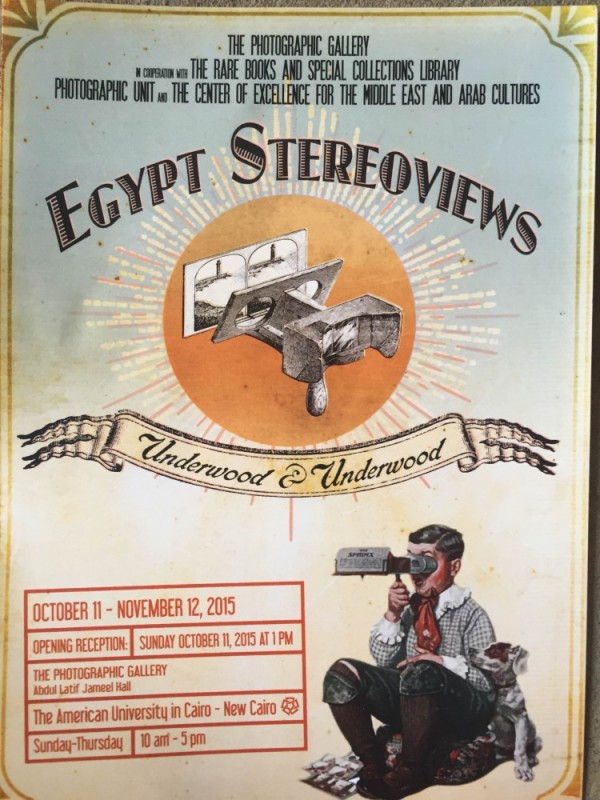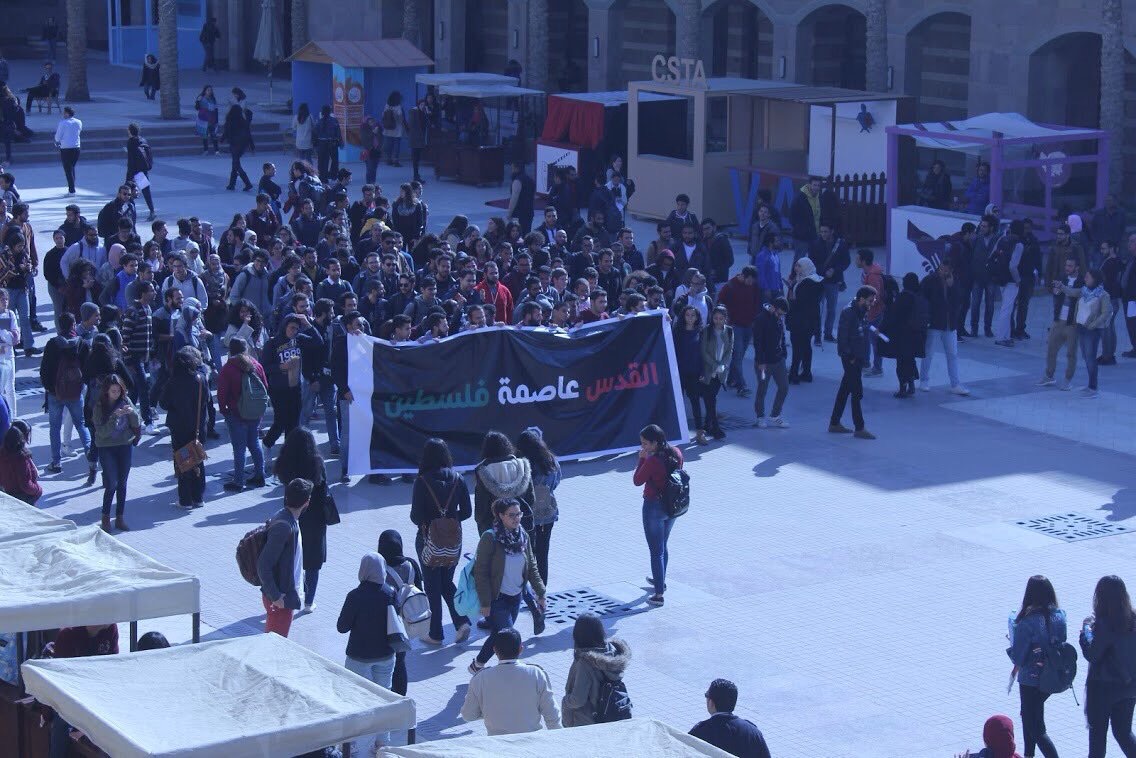Egypt With a Stereoscopic View
By Nourhan Hammam
![Stereo-view, also called stereoscope, is one of many photographic techniques for creating or enhancing the illusion of three-dimensional depth [Al Sheikh]](http://www.auccaravan.com/wp-content/uploads/2015/10/IMG_7075-copy-e1445547734753.jpg)
Stereo-view, also called stereoscope, is one of many photographic techniques for creating or enhancing the illusion of three-dimensional depth from given two-dimensional images when viewed with what amounts to 3D glasses.
“It’s an aspect of photography rarely treated, so it was good to exhibit [the technique] because it shows yet another dimension of photography, since what we want to show is the technique and also the subject,” said Ola Seif, the Curator of Photography Collections in the Rare Books and Special Collections Library (RBSCL).
A number of stereoscopic photographs of Egypt’s many historic and archaeological sites, such as the pyramids, the deserts, the Suez Canal and Alexandria, are currently on display at the Photographic Gallery in Abdul Latif Jameel Hall.
“All the photographs are black and white; each has got its beauty and its glamour and some of the attraction is because they’re in black and white and sepia,” said Seif.
Each photograph has an English caption on the front with a translation of six languages on the back.
“We had difficulties convincing the director of the gallery because he thought the pictures are small and won’t attract people, and it took years of convincing and persuading, but because of the beauty of the subject and the technique, we were able to finally convince him,” added Seif.
The idea of this photographic technique first started in the late 19th and early 20th Centuries when it was used by publishing companies for tourism publicity.
“It’s a very interesting photo exhibition and it’s actually my first time to see something like this. I just loved the idea of how two photographs when put together gives you a three-dimensional effect,” said Atheer Salama, an architectural engineering junior, who attended the photo exhibition.



